Transcend SSD320 & SSD720 (256GB) Review
by Kristian Vättö on January 25, 2013 11:31 AM ESTTranscend SSD720
Both the SSD720 and SSD320 use matching all-metal chassis. The height of the drives is 7mm, making them viable options for nearly all laptops, including some ultrabooks. Transcend doesn't include anything else but a 2.5" to 3.5" adapter and mounting screws in the retail boxes.
Delving inside the chassis reveals eight 24nm SanDisk Toggle-Mode MLC NAND packages. There are another eight on the other side of the PCB, meaning that the packages are dual-die (2x8GB). This NAND is exactly the same (part numbers are a match) as what Corsair uses in their Force GS SSD.
In addition to the another eight NAND packages, the other side of the PCB houses SandForce's SF-2281 controller. As usual, there's no DRAM present because SandForce relies on on-die caches.
SSD320
The SSD320 is a bit more interesting. That's Micron's 25nm asynchronous MLC NAND but with Transcend's labels. Similar to the SSD720, there is a total of sixteen NAND packages, each consisting of two 8GB dies. It's not abnormal for SSD manufacturers to rebrand the NAND they're using and for example OCZ and Kingston do it, although I'm personally not a big fan of this trend because it adds confusion. I do see the reasons behind it, though, as buying NAND in wafers and then packaging is cheaper than buying pre-packaged NAND straight from the manufacturer.
Transcend's SSD Toolbox: SSD Scope
Transcend offers a toolbox for their SSDs called SSD Scope. There is no software CD included in the packaging, but the toolbox is available as a free download at Transcend's website. The toolbox has no clone function but there is a separate TSClone application included in the SSD Scope installer.
SandForce actually offers a toolbox to their clients, but many have decided not to distribute it (there may be some licensing fees involved). I have a feeling that SSD Scope is essentially SandForce's toolbox with Transcend's own skin. The functions are very basic: It can read your drive and SMART information, diagnose, erase and update the drive. For some reason, only the update function works in addition to SMART data, when trying to scan or erase the drive the software says "selected drive is not supported". It's possible that Transcend simply haven't enabled this function in the software or drive's firmware, but as it stands the toolbox is relatively redundant because there are plenty of freeware SMART tools that can do the same.
Test System
| CPU | Intel Core i5-2500K running at 3.3GHz (Turbo and EIST enabled) |
| Motherboard | AsRock Z68 Pro3 |
| Chipset | Intel Z68 |
| Chipset Drivers | Intel 9.1.1.1015 + Intel RST 10.2 |
| Memory | G.Skill RipjawsX DDR3-1600 2 x 4GB (9-9-9-24) |
| Video Card |
XFX AMD Radeon HD 6850 XXX (800MHz core clock; 4.2GHz GDDR5 effective) |
| Video Drivers | AMD Catalyst 10.1 |
| Desktop Resolution | 1920 x 1080 |
| OS | Windows 7 x64 |


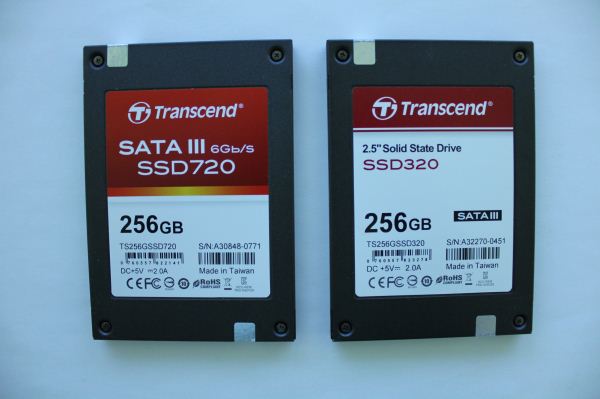
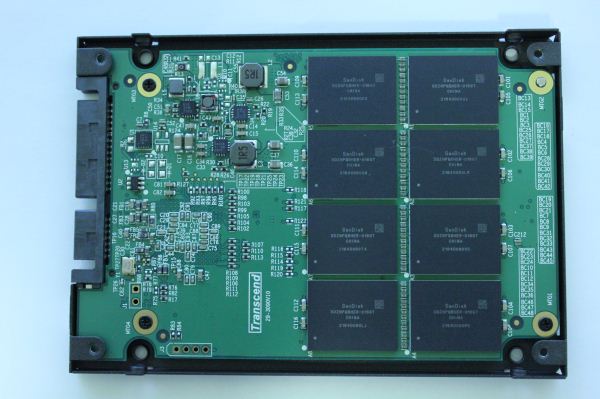

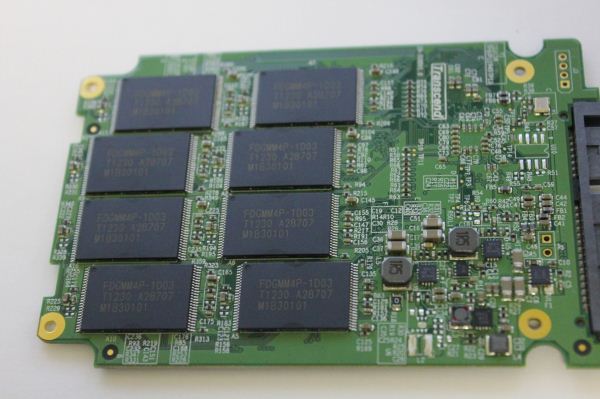
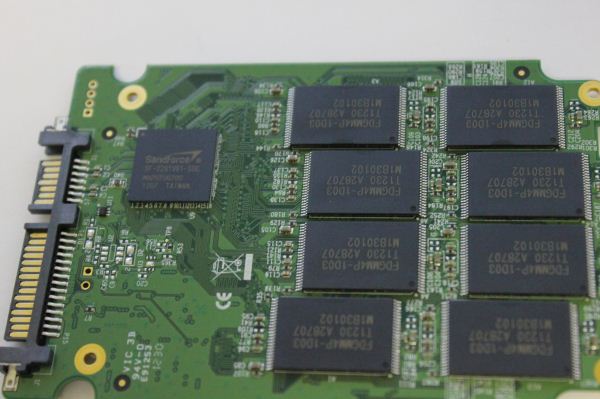

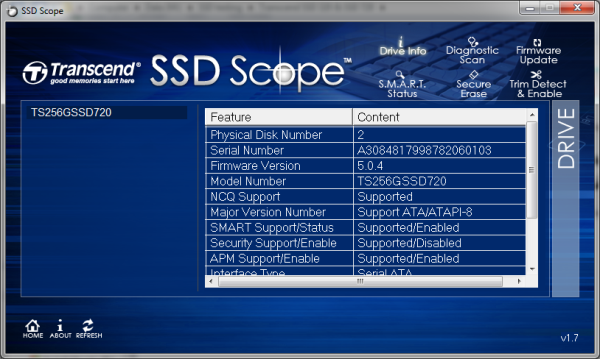








34 Comments
View All Comments
paul878 - Friday, January 25, 2013 - link
For a second I thought they were 320G and 720G drives.Azurael - Friday, January 25, 2013 - link
So what's the difference between a Sandisk Extreme SSD and a Transcend SSD720? How many more identical SSDs can the market support?Flying Goat - Friday, January 25, 2013 - link
If you tried to skip the drives over a lake, you'd find that one was most likely designed with aerodynamics in mind, while the other was not. Sadly, we're just never going to see the sort of truly complete feature comparison at AnandTech that covers that sort of thing. :)gammaray - Friday, January 25, 2013 - link
i dont know, but i got the SanDisk extreme 240gb home and its ultra fast and paid 160$ on sale for it :Dembzyk - Sunday, January 27, 2013 - link
9.5mm vs 7mm heightEgg - Friday, January 25, 2013 - link
The Transcend SSD720 256GB achieves a busy time of just over half that of the Samsung SSD 840 Pro 256GB, and it's missing a decimal place.This seems highly suspect.
Kristian Vättö - Saturday, January 26, 2013 - link
Oh, you're right, there was a typo. It should've been 362 instead of 162. Fixed! :-)iwod - Friday, January 25, 2013 - link
SSD1st Gen - SATA ; Response Time Reduction Compared to HDD
2nd Gen - SATA II; Higher Seq Read Write
3rd Gen - SATA II; Better Random IO
4th Gen - SATA III; Overall Improvement to both Seq and Random
5th Gen? I think Next Gen we need SATA Express and something similar to Intel's Consistent I/O Performance.
Tech-Curious - Saturday, January 26, 2013 - link
Eh, there's still a fair amount of head room on the SATA 3 interface. Wouldn't expect PCIe to become the norm for at least another two generations.Tech-Curious - Saturday, January 26, 2013 - link
Sorry, misread your comment, iwod. Still, even if sequential speeds remain more or less stagnant, there's a lot of room left to improve random read/write with SATA 3.